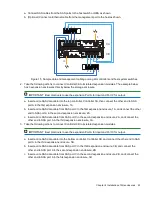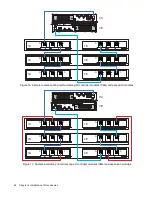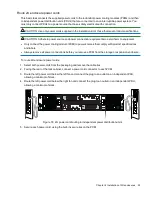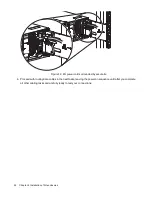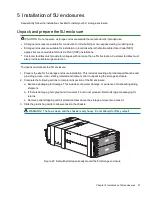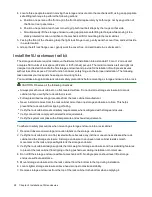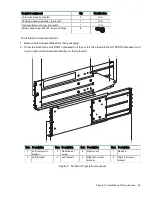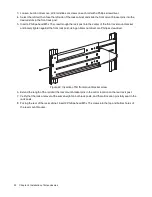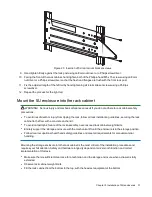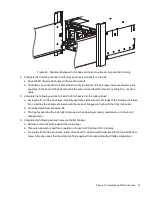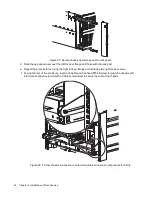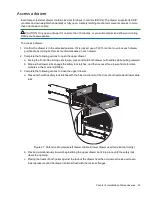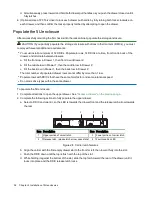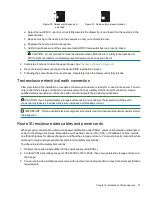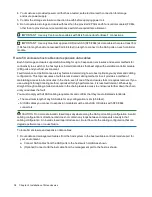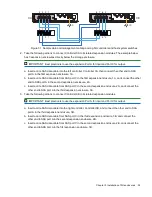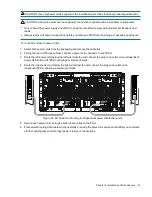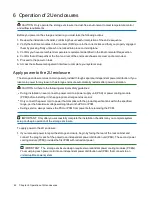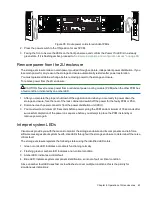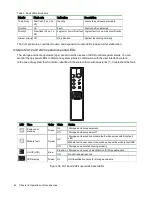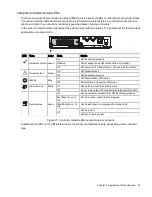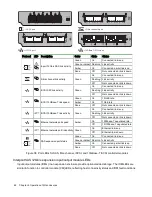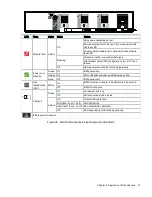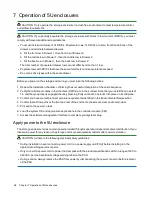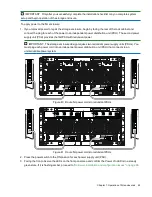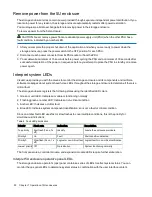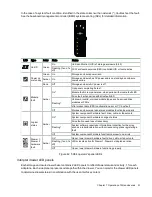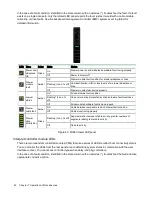
Chapter 5 Installation of 5U enclosures
37
Figure 29 Release latch open and
unlocked
Figure 30 Release latch properly locked
e. Select the next DDIC, orient it so the LED is towards the drawer front, and insert into the next slot in the
same manner.
f. Repeat, moving to the next slot in the sequence, until you complete the row.
g. Populate the next two rows in sequence.
h. Verify that all drives are at the same level and all DDIC release latches are properly locked.
CAUTION Do not proceed to close the drawer unless all DDICs are in a fully locked position or
DDIC height can inhibit or completely prevent drawer access once you close it.
3. Complete all actions to close the upper drawer. See
4. Open the lower drawer and repeat the above DDIC installation process.
5. Following the same drawer closure process, completely close the drawer until it fully latches.
Test enclosure electrical earth connection
After completion of all installation procedures, the storage enclosure is ready for connection to power. You can
only connect the storage enclosure to a power source that has a safety electrical earth connection. Have a
qualified electrical engineer confirm the earth connection meets the product specifications.
CAUTION If you install multiple storage enclosures in a rack cabinet, the importance of the earth
connection increases, since each enclosure increases earth leakage current.
IMPORTANT Only a qualified electrical engineer who meets local and national standards should perform
the inspection.
Route 5U enclosure data cables and power cords
When properly connected to autonomous power distribution units (PDUs), power cords provide uninterrupted
power to the storage enclosure. Data cables, such as fibre channel (FC), SAS, or 10GBase-T cables, provide
an efficient highway for data exchanges to and from the storage enclosure. You must properly route both while
adhering to all grounding requirements and electrical safety precautions.
To adhere to electrical safety precautions:
1. Observe the caution labels affixed to the power supply units (PSUs).
2. Confirm PCM input voltage range is 100-240VAC at 50 to 60Hz, then only operate the storage enclosure in
that range.
3. You must provide a suitable power source with electrical overload protection to meet technical specification
requirements.

